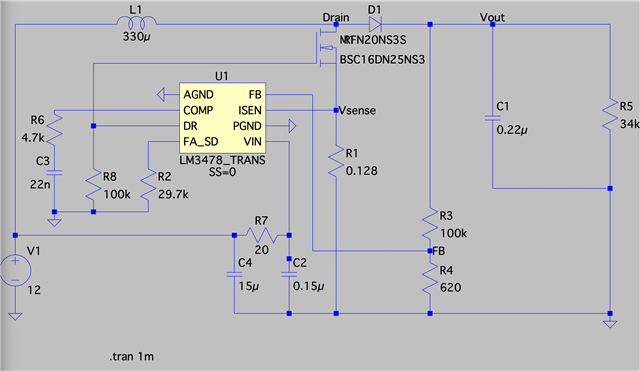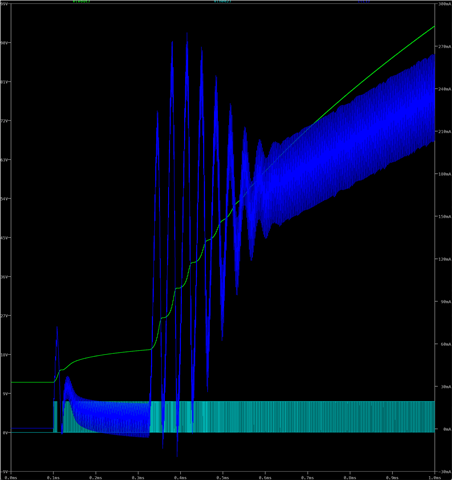Other Parts Discussed in Thread: PMP20183
Hi Team,
We would like to ask your help regarding our customer's inquiry below.
- VIn = 12V
- Vout = 200V
- Iout = 6-8mA
- Switching freq = 500KHz

- This boos converter will be used to feed a multiplexed load which consumes around 6mA. By multiplexing I mean it is gonna be disconnected so the circuit will be rapidly changing between load and no load condition. 2 extra mA are consumed by biasing the feedback tension divider. The matter is that the load is gonna be multiplexed at a 30-40KHz frequency (more or less). So long I made the design thinking in the 6mA load, but I am not sure if I should have considered in some way the multiplexing effect. Can I assume that the output voltage will be properly regulated without problem despite changing the load condition periodically?
- I tried to simulate the circuir but there is something strange with the inductor current at the beginning. The picture below shows the waveform I refer to. The dark blue waveform is the inductor current. As you can see, despite the sae-tooth shape, there is a much lower frequency oscillation at the beginning which seems to perfectly coincide with Vout derivate (light green waveform). Although I am not worried about because the peak current in steady state is slightly higher than the one in the oscillation, I have not been able to found why this happens. Could you please help me to find out why is this happening and to solve any problem in case there is one?

- I would also like some advice for the compensation network. I think it is good enough like this but I am not sure.
- Finally I would love to receive some general feedback of the overall design if possible. Maybe I could add some Bypass capacitor at the output? Change Vin network value or add more bypass capacitors?
He also sent another email below.


Regards,
Danilo

